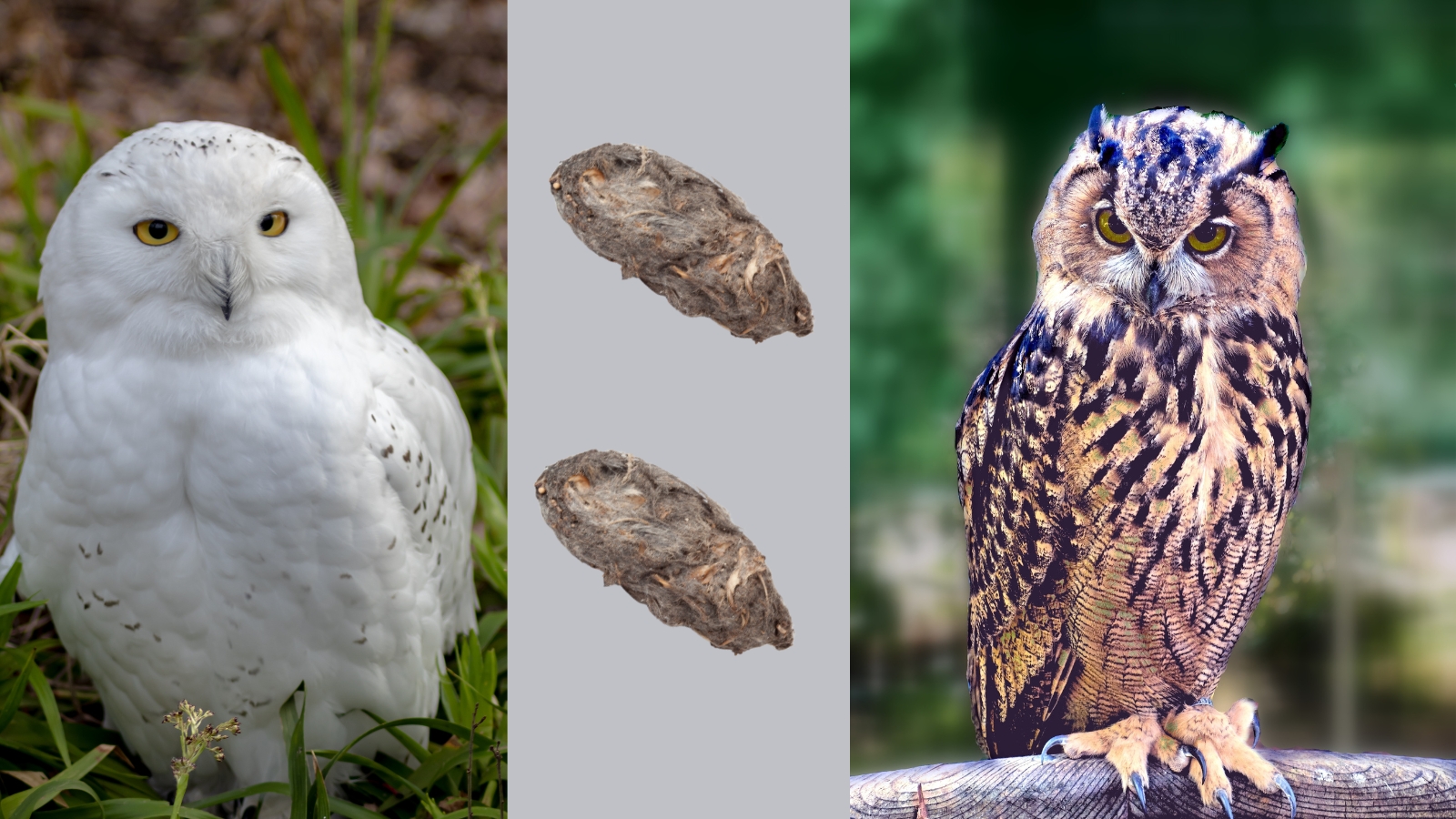An owl pellet is a compact mass of undigested parts of an owl’s prey, containing bones, fur, feathers, and other indigestible materials, that is regurgitated through the bird’s beak. These pellets form in the owl’s gizzard and are expelled regularly, typically once per day, providing valuable insights into owl diets and local ecosystems.
In the quiet hours of dawn, as an owl settles into its daytime roost after a night of hunting, a remarkable biological process occurs. The owl opens its beak, and without any apparent effort, a small, dark, oval-shaped object drops to the ground below.
This seemingly unremarkable occurrence represents one of nature’s most fascinating digestive adaptations and an incredible scientific resource – the formation and expulsion of an owl pellet.
Owl pellets have captivated scientists, educators, and curious minds for generations. These compact packages of undigested material offer a unique window into the predator-prey relationships that sustain ecosystems worldwide.
Unlike other birds of prey that produce similar waste, owl pellets are particularly valuable because they contain nearly complete skeletal remains of their prey, preserved in remarkable detail.
In this comprehensive article, we’ll explore the science behind owl pellets, from their formation in the owl’s specialised digestive system to their significance in scientific research and education.
Whether you’re a biology student, an educator looking for engaging classroom activities, or simply intrigued by the wonders of the natural world, discovering the secrets of owl pellets reveals a fascinating intersection of biology, ecology, and natural history.
Key Takeaways
- Owl pellets are masses of undigested bones, fur, and other indigestible materials regurgitated by owls after feeding.
- The pellet formation process occurs in the owl’s gizzard, with indigestible materials compressed into an oval mass that is later expelled.
- Owls typically produce one pellet per day, often from the same roosting spot.
- Pellet analysis provides valuable scientific data about owl diets, prey populations, and local ecosystem health.
- Owl pellet dissection is a popular educational activity that teaches students about predator-prey relationships, food webs, and skeletal anatomy.
- Different owl species produce distinctively shaped pellets, which can help researchers identify which owl species are present in an area.
Related Posts
The Owl’s Unique Digestive System
How Owls Consume Their Prey
The story of an owl pellet begins with the owl’s hunting and eating habits. Unlike many other birds of prey, owls have several unique adaptations that influence how they process food. Owls typically swallow their prey whole or in large chunks, rather than tearing it into smaller pieces as hawks or eagles might do. This distinctive feeding behaviour is directly related to the formation of pellets.
When an owl captures prey, typically small mammals like mice, voles, and shrews, but sometimes birds, amphibians, or insects, it uses its sharp, curved beak to deliver a killing bite.
Then, instead of meticulously picking apart its meal, the owl positions the prey headfirst and swallows it whole or in large sections. This efficient feeding method allows the owl to consume prey quickly, minimising the time spent in the vulnerable act of eating.
The Two-Chambered Stomach
The owl’s digestive system has evolved to handle this unique feeding method through a specialised two-chambered stomach:
- The proventriculus (first chamber): This is the glandular stomach where digestive enzymes, acids, and mucus begin breaking down the soft tissues of the prey. Here, the digestible components of the meal, muscle, organs, and other soft tissues, are liquefied in preparation for nutrient absorption.
- The gizzard (second chamber): Also called the ventriculus or muscular stomach, this chamber acts as a filtering device in birds of prey. It has powerful muscles that contract to help process food, but in owls, it serves a crucial additional function—separating digestible from indigestible material.
Unlike many other birds, owls lack a crop (a storage pouch in the throat), which means food passes directly into their digestive system. This direct path contributes to the need for efficient processing of indigestible materials.
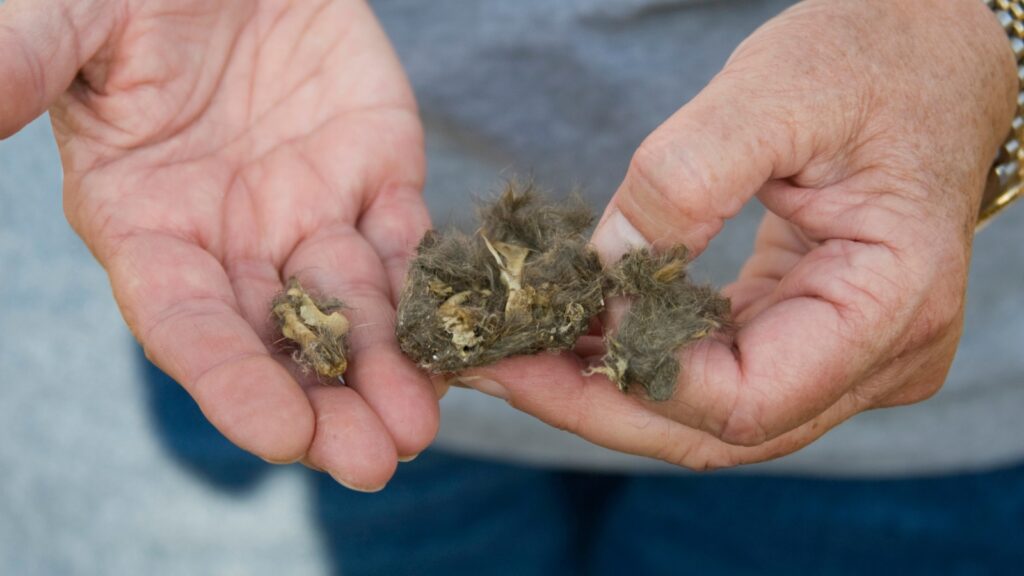
The Pellet Formation Process
How Pellets Form in the Gizzard
As the owl’s meal moves through its digestive tract, the gizzard performs a remarkable sorting operation. The digestible portions, like meat and organs, continue through to the small intestine for nutrient absorption. However, the indigestible components—bones, teeth, fur, feathers, and insect exoskeletons—remain behind in the gizzard.
Over several hours, the gizzard’s muscular contractions compress these indigestible materials into a compact, oval-shaped mass, the forming pellet. This process packs the material tightly, giving the pellet its characteristic shape that often mirrors the internal contours of the gizzard. The compression is so effective that even the most delicate bones often remain intact within the pellet.
The Regurgitation Process
After the pellet forms, it moves back up from the gizzard to the proventriculus, where it may remain for up to 10 hours before expulsion. This waiting period is significant because the presence of the pellet partially blocks the owl’s digestive system, meaning the bird cannot eat again until the pellet is ejected.
When the owl is ready to expel the pellet, often before its next meal, it assumes a distinctive posture. The owl will typically:
- Close its eyes
- Narrow its facial disc
- Stretch its neck upward
- Open its beak wide.
The pellet then drops out without any pronounced retching movements. This process, known as casting or egestion, is a normal part of the owl’s digestive cycle and typically occurs once per day, often at the same roosting location.
Fresh owl pellets appear dark and shiny, with a wet surface that quickly dries to a matte grey or brown. A typical Barn Owl pellet measures approximately the size of a human thumb, though the dimensions vary by owl species and the size of their recent prey.
Composition and Characteristics of Owl Pellets
What’s Inside an Owl Pellet?
The contents of an owl pellet provide a remarkably detailed inventory of the owl’s recent meals. A typical pellet contains:
- Skeletal remains: Small bones including skulls, jawbones, ribs, vertebrae, and limb bones
- Fur or feathers: The outer covering of prey animals
- Teeth: Often still attached to jawbones, providing valuable identification clues
- Claws and beaks: If the prey included birds or some mammals
- Insect exoskeletons: Particularly in pellets from owls that consume beetles and other large insects.
A single pellet often contains the remains of multiple prey animals, typically 4-5 small mammals in the case of Barn Owls. This concentration of remains makes pellets particularly valuable for studying owl diets.
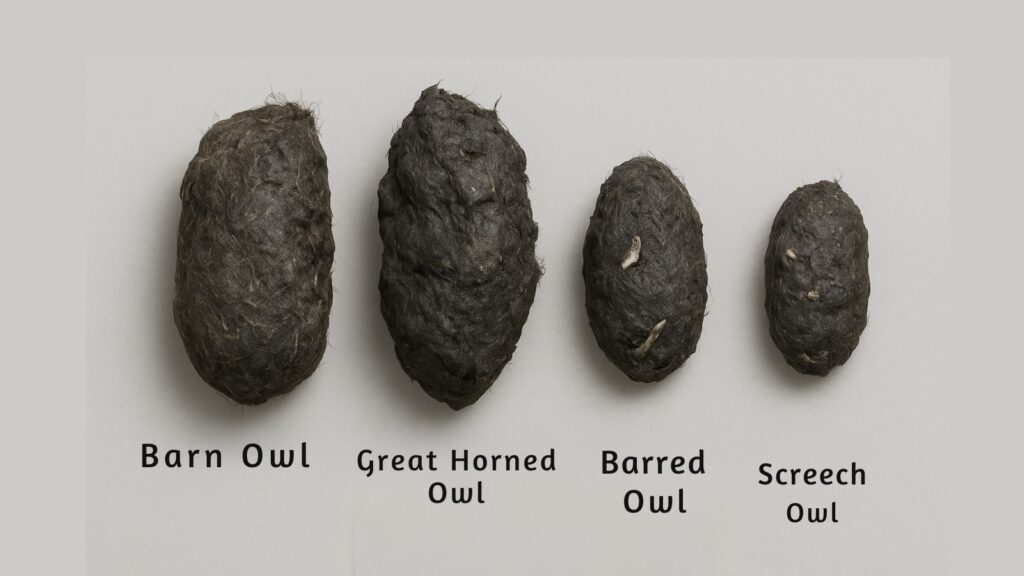
Different Types of Owl Pellets
Not all owl pellets are created equal. Their appearance, size, and content vary significantly based on:
- Owl species: Larger owl species like Great Horned Owls produce larger pellets than smaller species like Screech Owls. The pellets of a Great Horned Owl may measure 3-4 inches long, while those of a Screech Owl might be only 1-1.5 inches.
- Diet: Pellets from forest-dwelling owls often contain more bird and small mammal remains, while those from grassland-hunting owls typically have higher concentrations of vole and mouse bones.
- Geographic location: Owl pellets reflect local prey availability, so pellets from the same species in different regions may have notably different contents.
- Season: The composition of pellets can change throughout the year as prey availability shifts with seasonal patterns.
Owl pellets differ from those of other birds of prey in several important ways. Owl pellets typically contain a higher proportion of bone material because owls have less acidic digestive juices than hawks or falcons. Additionally, owls tend to pluck their prey less thoroughly than other raptors, resulting in more fur and feathers in their pellets.
Scientific Importance of Owl Pellets
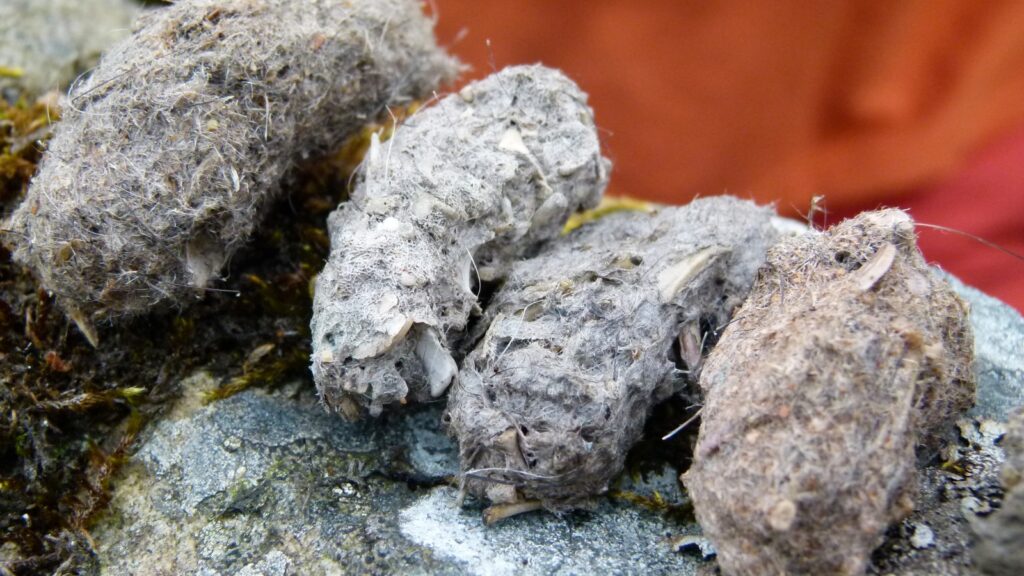
Research Applications
Owl pellets serve as invaluable research tools in several scientific disciplines:
- Dietary studies: Pellet analysis provides detailed information about owl food preferences and hunting patterns without the need to observe the birds directly. By examining thousands of pellets, researchers have compiled comprehensive data on owl diets across different regions and seasons.
- Small mammal biodiversity: Owl pellets effectively sample small mammal populations across the landscape. As Dr. Simon Wills of the University of East Anglia notes in his research, “Owl pellet content analysis offers a low-cost, non-invasive alternative to live trapping, as it is generally reflective of prey abundance within the broader landscape.” This makes pellets particularly valuable for monitoring rare or elusive species.
- Environmental contamination: Recent research has examined owl pellets for traces of environmental pollutants that accumulate in the food chain. A 2024 study published in Annals of Microbiology demonstrated that “wild barn owl pellets at low environmental contamination” could serve as indicators of ecosystem health.
- Historical ecology: Ancient owl pellets preserved in cave deposits provide insights into historical mammal distributions and how they’ve changed over time in response to climate shifts and human activities.
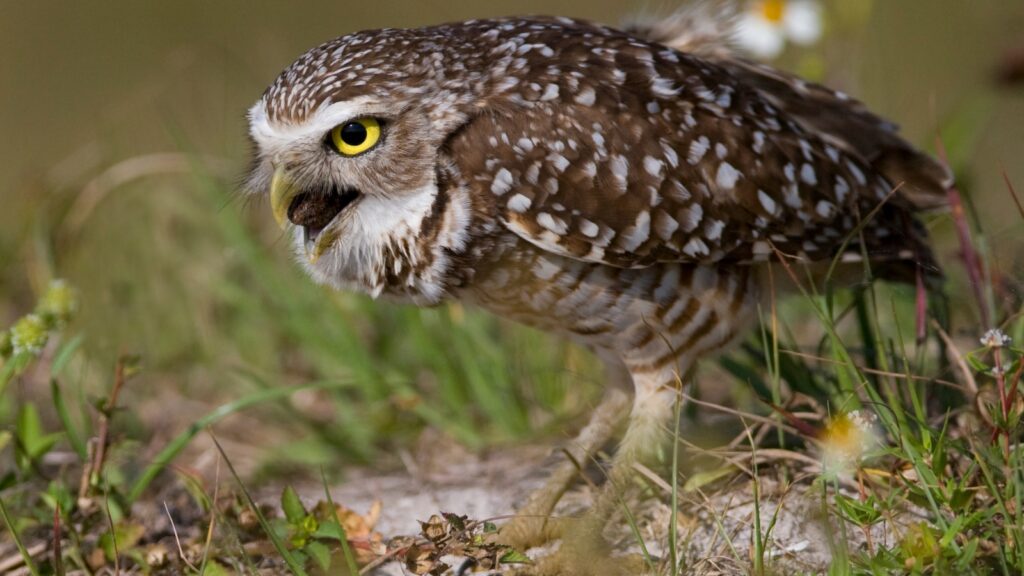
Conservation Applications
The study of owl pellets has significant conservation applications:
- Monitoring endangered prey species: Rare or declining small mammals may be detected in owl pellets when conventional survey methods fail to find them. A 2023 study in the Journal of Zoology found that owl pellet analysis identified three threatened rodent species that had been missed by traditional trapping surveys.
- Habitat assessment: The composition of prey species in pellets reflects habitat quality and can guide land management decisions. For example, a high proportion of woodland species in Barn Owl pellets indicates the importance of preserving wooded areas near agricultural fields.
- Climate change impacts: Long-term studies of pellet contents can reveal shifts in species distributions related to climate change, as prey animals move to new areas in response to changing conditions.
Educational Value of Owl Pellets
Classroom Applications
Owl pellet dissection has become a staple of life science education for good reason. This hands-on activity offers multiple educational benefits:
- Food web exploration: Students directly observe predator-prey relationships and can construct food webs based on their findings.
- Skeletal anatomy: The dissection process allows students to identify, sort, and sometimes reconstruct the skeletons of small vertebrates, providing a practical introduction to comparative anatomy.
- Scientific methods: The systematic process of carefully teasing apart the pellet, identifying bones, and recording findings mimics genuine scientific research methodology.
- Ecological concepts: Students learn about energy transfer through ecosystems, biomagnification, and the role of predators in controlling prey populations.
How to Conduct an Owl Pellet Dissection
For educators interested in incorporating owl pellet activities into their curriculum, here’s a basic procedure:
- Preparation: Commercially purchased pellets are typically heat-sterilised and safe to handle, though disposable gloves are recommended. Each student or group needs a pellet, dissection tools (tweezers and probes work well), a dissection tray or paper plate, and a bone identification chart.
- Observation: Before dissection, have students record the pellet’s dimensions, colour, texture, and other observable characteristics.
- Dissection: Using tweezers, students gently pull apart the pellet, separating bones from fur. The careful extraction of delicate bones teaches patience and fine motor skills.
- Identification: Students sort the bones by type (skulls, jawbones, limbs, etc.) and use identification guides to determine which species were consumed by the owl.
- Analysis: Students can calculate what percentage of the owl’s diet consisted of each prey type and discuss what this reveals about the local ecosystem.
The Cornell Lab of Ornithology notes that “when kids dissect owl pellets, they can see and identify the tiny bones from that owl’s meal, can learn about the owl’s diet and place in the food web.” This hands-on connection makes abstract ecological concepts tangible and memorable.
The Role of Owl Pellets in Understanding Ecosystems
Indicator of Ecosystem Health
Owl pellets function as natural sampling tools of the surrounding environment. Analysis of large numbers of pellets can reveal:
- Prey species richness: The diversity of species found in pellets indicates the biodiversity of the surrounding habitat.
- Population cycles: Changes in the proportions of different prey animals over time can demonstrate natural population cycles, such as the well-documented 3-4 year cycles of vole abundance.
- Invasive species detection: Owl pellets have been used to track the spread of invasive small mammals. For example, the Greater White-toothed Shrew, a non-native invasive species in the UK, was first detected in some areas through Barn Owl pellet analysis.
- Human impact: Changes in land use, agricultural practices, and urbanisation can be reflected in changing pellet contents over time.
Predator-Prey Relationships
Owl pellets provide direct evidence of predator-prey dynamics in natural systems:
- Selective predation: By examining pellets, scientists can determine whether owls hunt prey in proportion to their abundance or selectively target certain species.
- Adaptive hunting: Seasonal variations in pellet contents demonstrate how owls adjust their hunting strategies in response to changing prey availability.
- Niche partitioning: Comparing pellets from different owl species in the same area shows how they divide food resources, reducing competition.
A 2022 study published in Ecology and Evolution found that “owl diet diversity was positively correlated with habitat heterogeneity,” supporting the importance of maintaining diverse landscapes for healthy predator-prey systems.
Conclusion
Owl pellets, these seemingly humble byproducts of an owl’s digestive process, represent remarkable windows into the natural world. From their formation through the owl’s specialised digestive system to their eventual analysis by curious students or seasoned researchers, pellets connect us to the intricate workings of nature’s food webs and ecological relationships.
For scientists, pellets offer a non-invasive method to study both predator diets and prey populations, providing insights that would be difficult or impossible to gain through direct observation alone. The time-capsule quality of pellets, preserving evidence of specific predation events, makes them uniquely valuable for ecological research and conservation efforts.
For educators and students, owl pellet dissection transforms abstract concepts into tangible discoveries. Few classroom activities can match the authentic scientific experience of carefully extracting tiny bones from a pellet, identifying the creatures they came from, and piecing together the story of an owl’s successful hunt.
In an age of increasing disconnection from natural processes, owl pellets offer a direct, hands-on link to the biological relationships that sustain our ecosystems. Whether you’re a seasoned biologist, a classroom teacher, or simply someone fascinated by nature’s ingenuity, owl pellets deserve appreciation as remarkable capsules of ecological information and windows into the hidden lives of one of nature’s most efficient and mysterious predators.
Frequently Asked Questions (FAQ)
Q: Are owl pellets the same as owl droppings?
A: No, owl pellets are not droppings or faeces. Pellets are regurgitated (brought up through the beak) masses of undigested material, while droppings are waste that has passed through the entire digestive system. Owl droppings are typically white and liquid, similar to those of other birds.
Q: How often do owls produce pellets?
A: Most owls produce one to two pellets per day, typically regurgitating a pellet about 6-12 hours after feeding. An owl cannot eat again until it has expelled the pellet from its previous meal.
Q: Are owl pellets dangerous or unhealthy to handle?
A: Raw owl pellets collected from the wild may contain bacteria or parasites. For classroom use, commercially available owl pellets are typically heat-sterilised to eliminate potential pathogens. When handling any owl pellets, it’s advisable to use disposable gloves and wash hands thoroughly afterwards.
Q: Can you identify which owl species produced a pellet?
A: Yes, with experience. Pellet size, shape, content, and location can help identify the owl species. For example, Barn Owl pellets are typically black when fresh, large, and compact with a smooth surface, while Great Horned Owl pellets are more irregular in shape with a rougher texture.
Q: Do other birds produce pellets too?
A: Yes, many birds, including hawks, eagles, herons, and even some songbirds, produce pellets. However, owl pellets are particularly valuable for research because they contain more complete skeletal remains due to the owl’s unique digestive system.
Q: How long do owl pellets last in nature?
A: The longevity of owl pellets depends on environmental conditions. In dry, protected locations, pellets may remain intact for years, though they gradually break down as insects (particularly clothes moths) consume the fur, leaving only bones behind. In wet or exposed areas, pellets decompose much more quickly.
Q: What is the largest number of prey animals ever found in a single owl pellet?
A: While most pellets contain remains of 4-5 small mammals, exceptional cases have been documented. One recorded Barn Owl pellet contained the remains of 18 shrews, representing an extraordinary night of hunting during peak prey abundance.
Q: Can pellets reveal anything about owl health?
A: Yes, abnormalities in pellet production or content can indicate health issues. For example, pellets with unusual texture or inadequate bone content might suggest digestive problems or nutritional deficiencies in the owl.
Q: Are owl pellets beneficial to the environment?
A: Yes, pellets contribute to nutrient cycling in ecosystems. As pellets break down, they release nutrients back into the soil. Additionally, the small bones in pellets provide a calcium source for many small animals, including rodents and some insects.
Q: Why are owl pellets important?
A: Owl pellets are important for multiple reasons. Scientifically, they provide a non-invasive way to study owl diets and monitor small mammal populations across landscapes. For conservation, they help track endangered species, assess habitat quality, and document ecological changes over time. In education, owl pellet dissection offers hands-on learning about food webs, anatomy, and scientific methods. Ecologically, pellets contribute to nutrient cycling and provide valuable information about ecosystem health and predator-prey relationships that would be difficult to obtain through other means.
Further Reading:
For those interested in learning more about owl pellets, here are some high-quality resources:
- Cornell Lab of Ornithology: “The Science Behind Owl Pellets” – An excellent educational resource from one of the world’s premier ornithology institutions, explaining the scientific value of pellet analysis.
- The Barn Owl Trust: “Pellet Analysis for Conservation Research” – Information on how scientists use pellet analysis for conservation monitoring and research.
